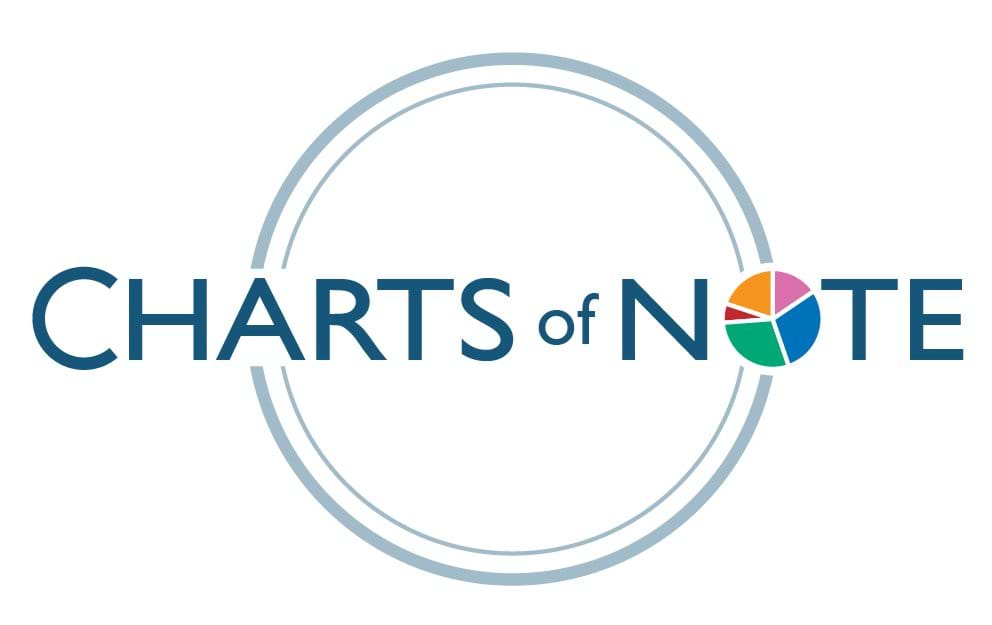ERS Charts of Note
Subscribe to get highlights from our current and past research, Monday through Friday, or see our privacy policy.
Get the latest charts via email, or on our mobile app for  and
and 

Friday, January 3, 2014
Since the 2010/11 marketing year, surplus global sugar production—the difference between total world production and total use—has led to the accumulation of stocks and downward pressure on world sugar prices. The global surplus is forecast to be smaller in 2013/14, as lower world prices in 2012/13 contribute to slightly lower production and greater consumption in 2013/14, however stocks are forecast to remain relatively high. India and China are the main sources of increased stocks, both in tonnage and in terms of percentage change; stock accumulation has also been significant in the European Union and Thailand. With stocks relative to use remaining above average, world sugar prices are forecast to be lower than levels seen in recent years. The U.S. sugar sector has gained significant support from high world prices until this past year and, although U.S. policies will limit domestic impacts, the outlook for lower world prices will have implications for U.S. producers and processors and USDA programs that provide domestic price support. This chart can be found in Sugar and Sweeteners Outlook: December 2013.

Tuesday, July 23, 2013
Brazil accounts for a dominant share of world sugar exports because of rapid expansion of cane sugar production at globally competitive prices. Brazil’s share of world sugar exports expanded fairly consistently from about 5 percent in 1989/90 to an average of just under 50 percent since 2009/10. The market share for other major sugar exporters, including Australia, Colombia, Guatemala, South Africa, and Thailand, has shown little tendency to grow or contract over time, and the rise in Brazil’s market dominance has been associated largely with decline in exports by previously large suppliers, particularly the EU and Cuba. Highly competitive costs of production have been a key factor driving the expansion of Brazil’s sugar exports. LMC International reports that production costs in the key Center/South region, which have been increasing, especially in dollar terms, for several years may now be leveling off. The last several years have seen the sugarcane crop aging due to underinvestment in the field. Replant rates have recovered in 2012, but it will take several years to restore a more optimal age profile. Nonetheless, Brazil, especially in the Center/South region, retains cost advantages from large average mill size and long crushing seasons. This chart can be found in Sugar and Sweeteners Outlook: June 2013.

Wednesday, June 5, 2013
Brazil is the largest global producer and exporter of sugar and, over the long term, world sugar prices are closely linked to production costs in Brazil, as well as movements in the exchange rate between the U.S. dollar and the Brazilian real. Prior to 2003/4, the depreciation of the real against the dollar contributed to declines in Brazilian production costs when denominated in dollars. Since 2003/04, the real has appreciated against the dollar, leading to a 210-percent increase in dollar-denominated Brazilian production costs, while production costs in real terms rose just 64 percent. Rising dollar-denominated Brazilian production costs have contributed to the 316-percent increase in nominal world raw sugar prices from a 23-year low of 6.2 cents/lb in 2003/04 to 25.8 cents/lb in 2011/12. This chart appears in World Raw Sugar Prices: The Influence if Brazilian Costs of Production and World Surplus/Deficit Measures, SSS-M-297-01, released May 29, 2013.

Thursday, May 16, 2013
U.S. honey production dropped 1.3 million pounds, or 1 percent, to 147.1 million pounds in 2012, continuing a declining trend since 2000. Despite a 5.3-percent increase in honey-producing bee colonies in the United States last year, the national average yield per colony fell by 6 percent, with the major honey-producing States of California and Montana largely responsible for the yield and production declines. Diminished U.S. bee colony populations associated with colony collapse disorder are a key factor in declining U.S. production. With a smaller domestic harvest, the average producer price of honey climbed 10.5 percent to $1.95 per pound in 2012, while the average retail price of natural honey rose 7.8 percent to $5.55 per pound. Lower domestic output and lower prices for imported honey also have led to continued growth in honey imports, with imports growing nearly 8 percent and accounting for nearly 70 percent of domestic use in 2012. This chart appears in Sugar and Sweeteners Outlook: April 2013 (SSSM-296).

Tuesday, April 2, 2013
Average U.S. per capita caloric consumption of added sweeteners, which maintained a significant upward trend in the 1980s and 1990s, has now sustained a significant downward trend since 1999. Calories derived from added sweeteners reached about 429 calories per capita—or 22 percent of average total caloric intake—in 1999, but fell to an estimated 379 calories—or about 15 percent of average total caloric intake—by 2010. Most of the decline has been associated with less consumption of carbonated beverages sweetened with high fructose corn syrup, along with increased consumption of unsweetened substitutes, including bottled water. This chart is adapted from a chart that appears in Sugar and Sweeteners Outlook, January 2013.

Thursday, August 16, 2012
Sugar production in the United States comes from both sugarbeets and sugarcane. For 2012, the National Agricultural Statistics Service forecasts harvested sugarcane area at 891,000 acres, an increase of 2.1 percent over last year, and harvested sugarbeet area at 1.216 million acres, which is practically the same as last year. In the United States, sugarcane is produced in four States: Florida, Louisiana, Texas, and Hawaii. This chart shows sugarcane area forecasts by State for the last five crop seasons. Florida and Louisiana account for over 90 percent of the total sugarcane area with 2012 area forecasts of 410,000 acres and 420,000 acres, respectively. Relative to 2011, sugarcane area is forecast to increase by 13,000 acres (3.3 percent) in Florida and by 10,000 (2.4 percent) in Louisiana. This chart is an update of one found in the Sugar and Sweeteners Outlook, SSS-M-287, July 2012.

Thursday, May 3, 2012
The U.S. honey crop was hampered by drought conditions in the South and heavy rainfall in many northern States in 2011. As a result, domestic honey production dropped 16 percent in 2011 from 2010 as the number of bee colonies fell 7.5 percent and yield per colony declined 9 percent. In total, domestic production fell by 28.1 million pounds of honey, despite record-high average prices received by honey producers in both 2010 and 2011. The drop in U.S. production, coupled with high domestic honey prices, increased honey imports to 288.3 million pounds in 2011, twice the amount imported a decade ago in 2001. The top three foreign suppliers of natural honey to the United States -- Argentina, Vietnam and India -- accounted for two-thirds of total U.S. imported honey in 2011. This chart is found in the April 2012 Sugar and Sweeteners Outlook, SSS-M-284.

Tuesday, January 31, 2012
Costs for transforming agricultural commodities into food products-transportation, processing, packaging, and other value-adding costs-can account for a substantial portion of the retail price. ERS compares prices paid by consumers with those received by farmers for many agricultural commodities to determine the farm share of the retail price. Over the last decade, the farm share of a pound of refined white sugar has varied from a low of 25 percent in 2007 to a high of 30 percent in 2010. Farm share changes from year-to-year partially reflect volatility in farm prices. The farm value of sugar rose from 13 cents to 19 cents per pound between 2007 and 2010, a larger percentage increase than the rise in retail sugar prices. More information on ERS's farm share data can be found in the Price Spreads from Farm to Consumer data set.

Tuesday, November 29, 2011
As noted in an earlier Chart of Note, cold and wet weather and below-average growing conditions led to late planting, a later-than-usual harvest, and lowered FY 2011 beet sugar production. As evidenced by the successively lower yield forecasts, the desired higher additional crop production did not result from the later harvest. The chart gives a historical perspective to the FY 2012 beet sugar forecast, showing a downward trend in area harvested since 1999/00. Because of the difficult planting conditions in the spring, 2011/12 planted area increased above trend as additional area was planted late to compensate for expected lower yields. The figure also shows an upward trend in sugar per harvested acre since 1999/00. The sugar yield expected in 2011/12 is far below the historical trend. This chart is found in Sugar and Sweeteners Outlook, SSS-M-279, November 15, 2011.

Tuesday, October 4, 2011
National sugarbeet yield is forecast at 24.2 tons per acre. Although this yield forecast is close to the average national yield since 2000/01 of 24.1 tons per acre, it is far below yields since 2006/07. Better seed varieties, designed to minimize disease and pest losses, were responsible for enhanced yields starting in 2006/07. Annual yields since 2006/07 have averaged 26.4 tons per acre, compared with 22.1 tons for 2000/01-2005/06. Yields in the latter period were not only larger but also about 49 percent less variable. Most of the recent sugarbeet production reduction was centered in the Red River Valley producing States of Minnesota and North Dakota. Poor growing conditions for the entire season have hampered plant development and will cause the harvest season to begin later than originally expected. A late start increases the likelihood of hard freezes before the crop is fully harvested. This chart appears in the September 15, 2011 release of Sugar and Sweeteners Outlook, SSS-M-277.

Monday, August 29, 2011
In 2010, 131.9 pounds per capita of caloric sweeteners were available for consumption by U.S. consumers, up slightly from 2009, but down from the per-person high of 151.3 pounds in 1999. For the first time since 1985, total sugar available for consumption exceeded total corn sweeteners (high fructose corn syrup (HFCS), glucose syrup, and dextrose). Rising sales of bottled water at the expense of HFCS-sweetened soft drinks have played a role in declining corn sweetener consumption. This chart appeared in the September 2011 issue of Amber Waves magazine. More information can be found in the ,Sugar and Sweeteners Outlook report, SSS-M-273, released May 16, 2011.


